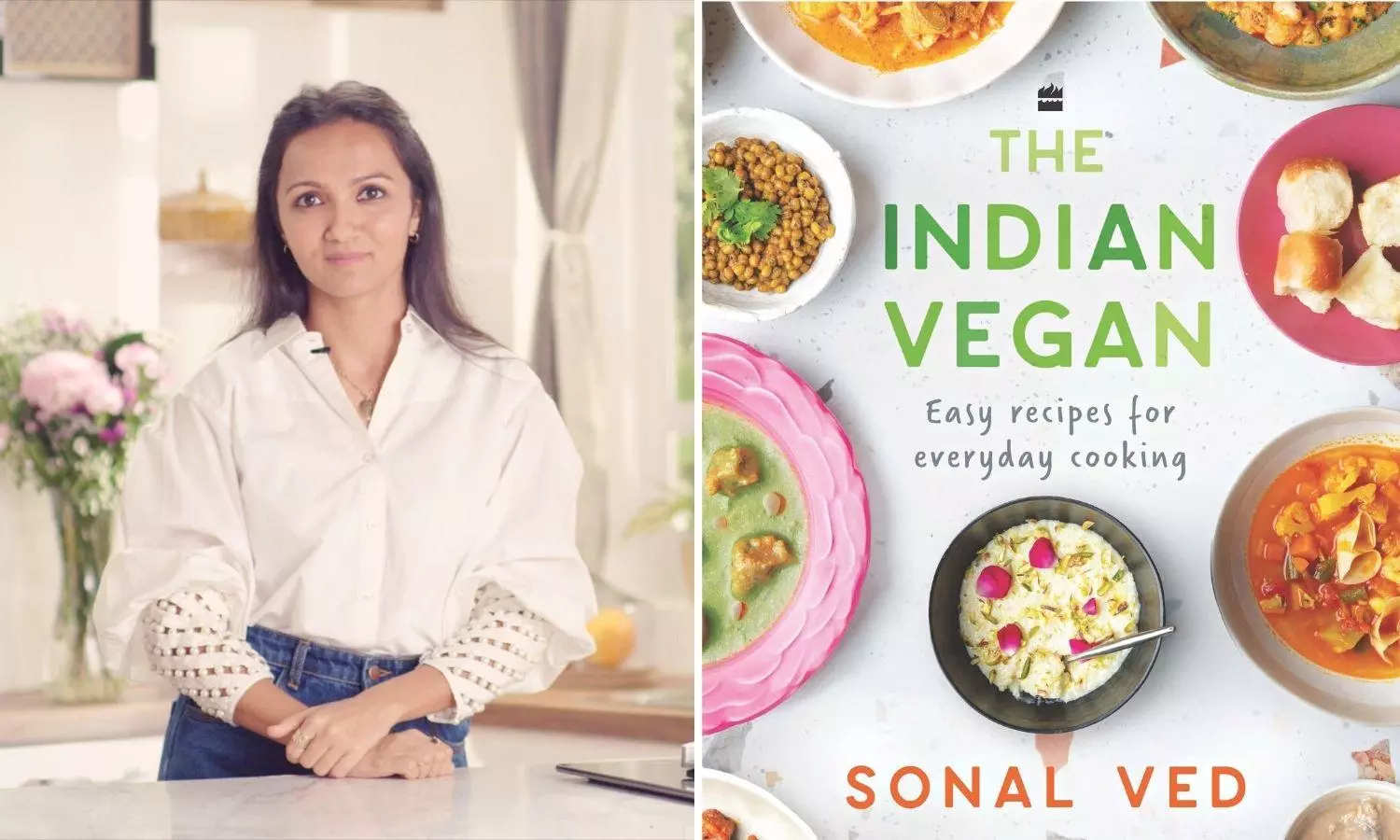The vegan wave with Sonal Ved has begun
Discover flavorful twists, wholesome classics, and the art of plant-based living with The Indian Vegan
- By Aayushi VichareLoading...
- | 22 Jan 2024 12:06 PM IST
 X
X
My first conversation with Sonal Ved about veganism dates back to July 2023, when we found ourselves in Rajahmundry. Here we stumbled upon a culinary gem, a coconut shake crafted from the amalgamation of coconut meat and coconut water. And I should let you know that sipping on this exquisite blend felt inherently right, after all, it wasn't just the best milkshake I had ever tasted, but more precisely, a revelation in the world of vegan beverages.
Sonal is a lifelong vegetarian. And labels like "foodie" are simply inadequate to capture the essence of her culinary passion. She has authored four books dedicated to the intricacies of Indian cooking and cuisine, with two of them being accredited by the New York Times. The uniqueness of ‘The Indian Vegan’—her recently launched cookbook— lies in the exploration of veganism within the framework of Indian culinary traditions. In an attempt to unfold the essence of the book, we were curious about certain aspects of her innovative approach. Join us as we explore the intersection of tradition and modernity, where Sonal's culinary expertise will take you on a unique journey.
Edited excerpts from the interview.
1. What sparked the idea for your recent cookbook "The Indian Vegan"?
Before landing my cookbook deal, I embraced a vegan diet on a whim. I read umpteen articles and studies, and watched documentaries that convinced me that in order to feel better and be fitter, I had to add more whole foods to my diet. Even as a lifelong vegetarian from a Gujarati background, transitioning to veganism was a new beast for me. Starting with cutting the cord with yoghurt, an ingredient I had been obsessed with all my life, I realised that despite my liking of yogurt-based meals, it wasn't conducive to my well-being. Now, my diet is 80% plant-based, constituting whole grains, fresh vegetables, fruits, alternative milks, and increased millet intake. This is what makes sense to my body type and I urge people to experiment until they find a diet plan that works well for theirs.
2. Take us behind the scenes, what was the most surprising or challenging part of the research and development process for the recipes in your book?
For a country with a 39% vegetarian population, ‘The Indian Vegan’ wasn’t too hard. Aided by the research I had done for my previous books—Tiffin: 500 Authentic Recipes Celebrating India’s Regional Cuisine and Whose Samosa Is It Anyway?—these insights broadened my understanding of the nuances of Indian regional cooking. Exploring various cuisines like Malvani, Bengali, and Rajasthani, made it clear that plant-based textures have been a part of Indian cuisine for decades. For instance, dishes like 'kele ki machli,' (fish of raw bananas) is a Kayasth preparation from the northern region of India, and comes from the kitchens of a sect that mingled with the Mughals and therefore needed to cook and eat food that resembled the diet of the court rulers. Similarly the Bengali 'dhoka’r dalna,' where the word ‘dhoka’ means ‘betrayal’, signifying fooling folks into believing that the lentil cakes are in fact chunks of meat. These are just two examples of how beautifully Indian cooking incorporates vegan food.
3. Uncovering facts about Indian vegan cooking sounds fascinating, can you share a couple of tidbits that stood out during your exploration?
The toughest but the most gratifying chapter of this book is the dessert section, which took me months to perfect—after all, what is Indian meethai without milk, ghee and mawa? However, through numerous experiments and trials, I discovered a dozen drinks and desserts that not only satisfy sweet cravings but also seamlessly eliminate the need for dairy. As a self-proclaimed sweet tooth, it was very essential that my own cookbook has dreamy desserts that don't taste like sawdust. My personal favourites include Elaneer Payasam, made with coconut milk, and Cashew Milk Phirni.
4. With a plethora of tempting recipes, do you have a personal favourite from the book, and what makes it special to you?
This is so hard for me, because I champion each recipe in this cookbook. However, if pressed to select, I would proudly present a spread featuring a Pudina Panki, Lilwa Kachori, and Bajra Rotla pockets as delectable sides. Moving on to the main course, a robust platter would boast the flavours of my Jackfruit Kosha Mangsho, Parsi Pumpkin Patio, Garhwali Kafuli, and Bengali “Plastic” Chutney along with gluten-free besan roti. Finally a generous helping of the rich and creamy cashew phirni will round off the meal on a sweet note.
5. As readers savour the diverse dishes in "The Indian Vegan," what's the key message or sentiment you hope they embrace in their culinary journey?
According to some reports, the Indian vegan food market was valued at US$ 1,372.3 million in 2022 and is expected to grow further. Keeping this in mind, one can conclude that veganism is not just a passing trend, but signifies a lifestyle choice deeply intertwined with sustainability and the urgent need to mitigate the snowballing effects of climate change. So it’s good to embrace it rather than thinking it's a short-lived trend.
6. For someone new to vegan cooking, what advice or tips would you offer to make the transition smoother?
I've never followed a meat diet, so for me to understand what a meat eater goes through, when they are deprived of that texture, taste and nutrition that meat provides is challenging. However, with this cookbook, the intention is to provide more than just substitution recipes (such as swapping paneer for tofu). Instead, with ;The Indian Vegan’ you now have a wide range of recipes from Indian cuisine that are vegan in nature, so you're still eating beautiful, wholesome classics like a Sindhi Bhee (lotus root) Kebab or Maharastrain Kothambir Vadi. This ensures that individuals exploring veganism can still relish the beauty and wholesomeness of these timeless dishes.

Aayushi Vichare
Aayushi is that friend who won’t let you take a bite without capturing it. For her, the easiest but still thoughtful way of making someone feel special is by cooking or getting them their favourite food. Currently, she’s on an expedition to integrate all her favourites: food, social media and marketing, so that you don't miss the hottest spot in town and you know where to eat those crispy and juicy chicken wings.


